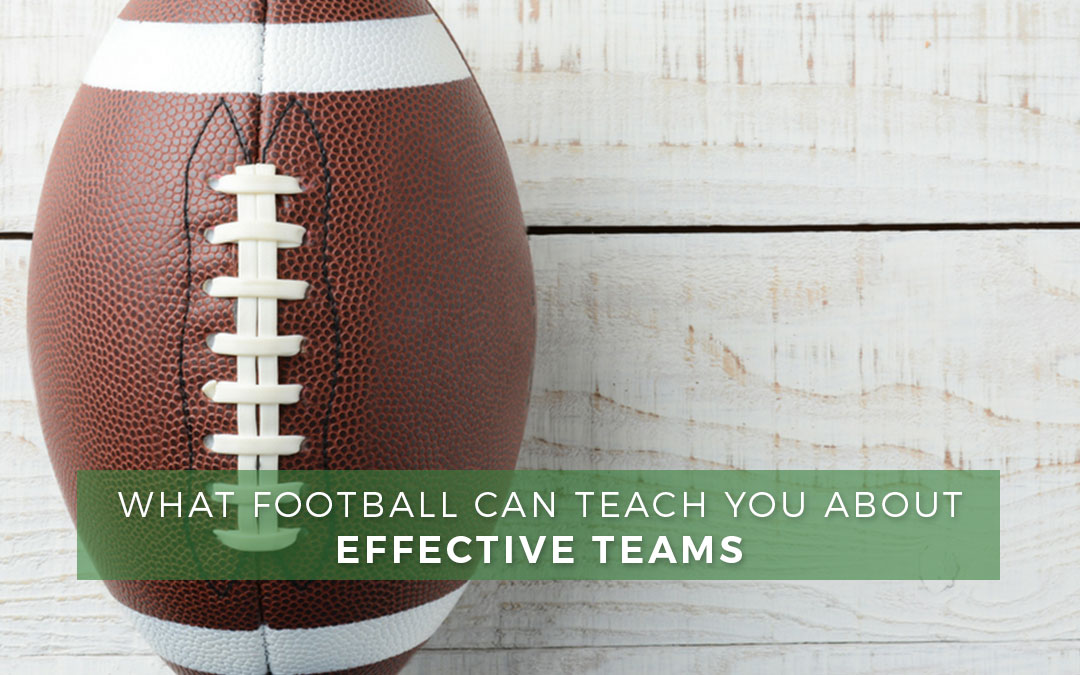Congrats! You’ve hired a stellar senior management team. Each of them is an absolute rock star with an impressive resume and – individually – they’re amazing.
So why is your team underperforming? Why aren’t you seeing the kind of collaboration or decision making you expected?
You’ve hired a “Team of Leaders.”
But you haven’t created a “Leadership Team.”
Why Great Individuals Don’t Automatically Create High Performing Teams
Think of your favorite sports team: when do they perform well and when do they disappoint? (Since I was born and raised in Pittsburgh, you should know that my heart bleeds black and gold for the Steelers.)
When your favorite team is firing on all cylinders, what makes them effective? Of course, having the right talent matters, but as any football draft watcher knows, playing as a team is more important than individual strengths.
True team players complement each other’s strengths and cover for each other’s weaknesses. They create a unity that helps them reach goals far above what they could achieve on their own.
When I think about the glory days of the 70’s Steel Curtain, it was collaboration and leadership that brought four Lombardi trophies to my hometown.
If your business performance is suffering it might be because you aren’t fully engaging everyone on your team. Do you even know what their leadership style is? Does your team know each other’s?
You hired your staff because they each brought competencies that you thought would complement your team. You know their functional competency, but do you understand how their leadership style will impact your effectiveness as a team?
If neither you nor your team members understand the communication and leadership styles that are making up your team, how can you collaborate effectively to produce the kind of winning results that a championship sports team does?
How the Enneagram Helps Build High Performing Teams
If you want more for your team, then hear this: I’ve got a secret weapon that will help you get there.
What is it? I’ve been using the Enneagram to decipher leadership styles and growth areas for years, and I’m deeply immersed in the power of this tool to help teams accelerate performance.
And other corporations are staring to take notice: recently Genentech and Toyota have been using the Enneagram to understand leadership and communication styles to improve team collaboration.
The Enneagram is the best tool I’ve found to help people understand and remember the leadership styles on a team. It even helps you pinpoint the direction of growth that each team member needs to develop.
“But what about Myers-Briggs?!” you ask. While the Myers-Briggs is a great tool for understanding your leadership style, it doesn’t work as well in a team setting. Most people won’t remember if you’re an INTP or an ENTJ (and they surely don’t remember what the heck that means anyway.)
The Enneagram uses nine easy to remember archetypes. Sure, there are nuances that play a key role (27 subtypes, wing styles, etc.) but it’s the overarching type that drives motivation. And these archetypes aren’t describing behavior, but the underlying motivation that drives someone’s performance.
When you understand what motivates people, you unlock the key to growth and performance.
Unlocking Growth and Collaboration in Leadership Teams
When you know the strengths, areas for growth, and leadership styles of the members of your team, you can appreciate and solicit their contributions. You can stop judging others because they’re different from you and start leveraging the gifts they bring.
Interested in exploring the leadership styles of your team? Want to become a true “Leadership Team” instead of a “Team of Leaders?” Our High-Performing Team program and Enneagram Applied course help you unlock leadership styles, communication dynamics, and collaboration strategies that drive real results. Or contact us to get started.



